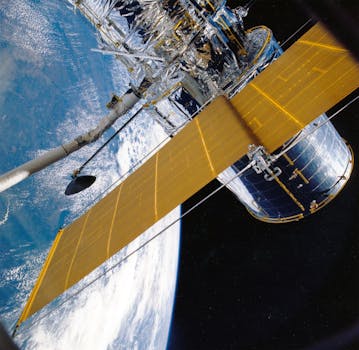
Navigating the Skies: Insights into Recent Satellite Telecommunications Innovations
Satellite telecommunications have come a long way since the launch of the first commercial communications satellite, Intelsat 1, in 1965. Today, satellite telecommunications play a vital role in global communications, providing connectivity to remote and underserved areas, supporting emergency communications, and enabling global navigation systems. Recent advancements in satellite telecommunications have revolutionized the way we communicate and access information, and this article will provide insights into the latest innovations and their impact on the industry.
Introduction to Satellite Telecommunications
Satellite telecommunications involve the use of satellites in orbit around the Earth to transmit and receive signals. These signals can be used for a variety of purposes, including telephone and internet communications, television broadcasting, and navigation. Satellite telecommunications offer several advantages over traditional fiber-optic and wireless communications, including global coverage, high bandwidth, and resistance to natural disasters and outages.
One of the key innovations in satellite telecommunications is the development of high-throughput satellites (HTS). HTS satellites use advanced technologies such as spot beams and frequency reuse to provide higher bandwidth and faster data speeds. This has enabled the widespread adoption of satellite broadband services, which are now used by millions of people around the world.
Recent Innovations in Satellite Telecommunications
Several recent innovations have further transformed the satellite telecommunications industry. One of the most significant is the development of low-Earth orbit (LEO) satellites. LEO satellites orbit the Earth at an altitude of around 500-1,000 km, which is much lower than traditional geostationary satellites. This lower altitude reduces latency and enables faster data speeds, making LEO satellites ideal for applications such as real-time video streaming and online gaming.
Another innovation is the use of advanced materials and manufacturing techniques to reduce the weight and cost of satellites. This has enabled the production of smaller, more efficient satellites that can be launched at a lower cost. For example, the use of 3D printing has enabled the creation of complex satellite components with reduced material usage and increased strength.
Additionally, the development of satellite constellations has enabled the provision of global coverage and continuous connectivity. Satellite constellations involve the launch of multiple satellites into orbit, which work together to provide seamless coverage and redundancy. This has enabled the widespread adoption of satellite-based services such as global navigation and remote sensing.
Impact of Satellite Telecommunications Innovations
The recent innovations in satellite telecommunications have had a significant impact on the industry and society as a whole. One of the most notable impacts is the expansion of broadband services to remote and underserved areas. Satellite broadband has enabled millions of people around the world to access the internet and other digital services, bridging the digital divide and promoting economic development.
Satellite telecommunications have also played a critical role in emergency response and disaster relief. Satellite communications can provide connectivity in areas where traditional infrastructure has been damaged or destroyed, enabling emergency responders to coordinate their efforts and provide critical services.
Furthermore, satellite telecommunications have enabled the development of new industries and services, such as global navigation and remote sensing. Global navigation systems such as GPS and Galileo rely on satellite telecommunications to provide location information and timing signals, while remote sensing applications such as earth observation and weather forecasting rely on satellite telecommunications to transmit data.
Conclusion
In conclusion, recent advancements in satellite telecommunications have revolutionized the way we communicate and access information. The development of high-throughput satellites, low-Earth orbit satellites, and satellite constellations has enabled the provision of global coverage, high bandwidth, and fast data speeds. The impact of these innovations has been significant, expanding broadband services to remote and underserved areas, supporting emergency response and disaster relief, and enabling the development of new industries and services.
As the satellite telecommunications industry continues to evolve, we can expect to see even more innovative technologies and applications emerge. The use of advanced materials and manufacturing techniques, the development of new satellite architectures, and the integration of satellite communications with other technologies such as 5G and IoT will all play a critical role in shaping the future of the industry.


